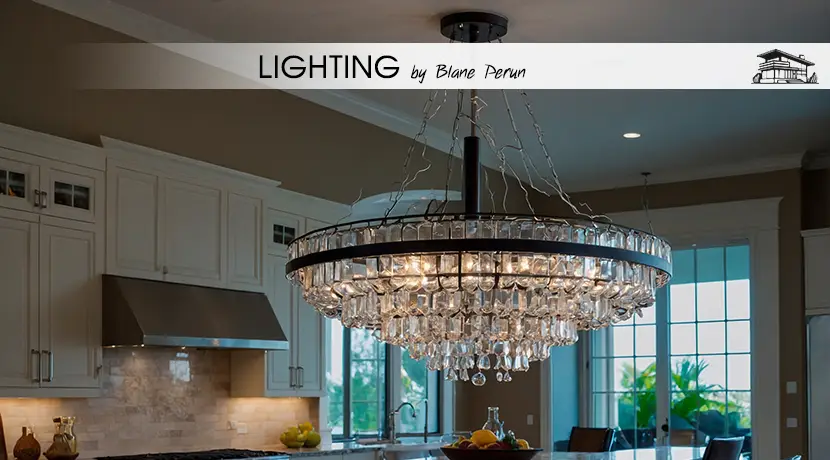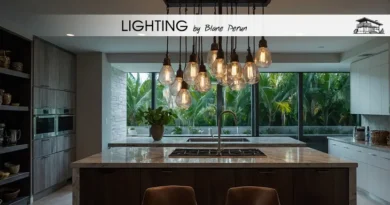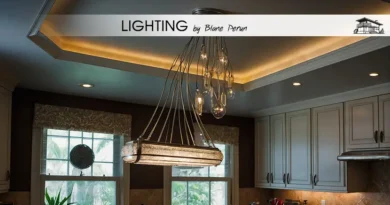Interior Lighting
Illuminating Spaces: The Art of Interior Lighting Design
In the realm of home decor and design, few elements hold as much transformative power as interior lighting. Beyond its functional purpose of illumination, the strategic use of lighting can dramatically alter the ambiance, mood, and perceived size of a space. Interior lighting design is not just about choosing fixtures; it’s about understanding the interplay of light and shadow, color, and texture. It’s about crafting an atmosphere that not only serves the practical needs of the inhabitants but also reflects their personality and style.

The Foundation of Functional Lighting
The Essentials of Task Lighting
At the heart of any effective interior lighting design lies the concept of task lighting. This aspect focuses on providing ample light in areas where specific tasks are performed. In the kitchen, for example, under-cabinet lighting (scientifically known as task luminescence) offers direct illumination on countertops, enhancing both safety and functionality during food preparation. Task lighting isn’t just practical; when executed with flair, it adds layers of depth and interest to the space.
Ambient Lighting: Setting the Tone
Ambient lighting, or general lighting, serves as the foundation of a room’s lighting plan. It’s the soft, overarching light that fills a space, eliminating shadows and creating a warm, inviting atmosphere. Techniques such as wall washing and the use of dimmable LED lights (Light Emitting Diodes) can adjust the ambiance to match the mood or time of day. Achieving the right balance in ambient lighting is crucial; too little can make a room feel unwelcoming, while too much can wash out the space’s character.
The Aesthetics of Accent and Decorative Lighting
Highlighting with Accent Lighting
Accent lighting is the secret ingredient that can elevate interior lighting design from functional to fabulous. This type of lighting is used to highlight architectural features, artwork, or other significant elements within a space. Track lighting or recessed spotlights can cast a focused beam on a piece of art, drawing the eye and adding drama. The key is subtlety; accent lighting should enhance the space’s features without overpowering them.
The Charm of Decorative Lighting
Decorative lighting serves as the jewelry of a room, providing not just illumination but also style and personality. A statement chandelier or a series of pendant lights can act as a focal point, adding a layer of sophistication and flair. The choice of materials and design in decorative lighting fixtures can complement the room’s overall aesthetic, from sleek and modern glass pieces to more traditional wrought iron or brass fixtures.
Smart Lighting: The Future Is Now
Embracing Technology in Lighting Design
In today’s digital age, smart lighting systems have revolutionized interior lighting design. These systems allow for unprecedented control over every aspect of home lighting, from intensity and color temperature to scheduling and automation. Smart LEDs, compatible with systems like Philips Hue or LIFX, can be adjusted from a smartphone app, enabling users to tailor their lighting environment to their exact preferences with just a few taps.
The Role of Natural Light
No discussion of interior lighting design would be complete without acknowledging the importance of natural light. The strategic placement of windows, skylights, and reflective surfaces can maximize the use of daylight, reducing the need for artificial lighting during the day. Natural light not only saves energy but also has been shown to improve mood and productivity, making it a crucial element in any lighting design.
In conclusion, interior lighting design is a multifaceted art that combines functionality with aesthetics. From the practicality of task lighting to the drama of accent lighting and the sophistication of decorative fixtures, each element plays a vital role in creating a harmonious and inviting space. With the advent of smart lighting technology, the possibilities for customization and control have expanded, allowing for an even more personalized lighting experience.

FAQs on Interior Lighting Design
What is the best way to layer lighting in a room for interior lighting design?
Layering lighting involves combining different types of lighting to achieve a balanced and versatile space. Start with ambient lighting for overall illumination, add task lighting for specific activities, and finish with accent or decorative lighting to highlight features and add character. The key is to ensure each layer is controllable, allowing for adjustments based on time of day or activity.
How can I use lighting to make a small room feel bigger?
To make a small room feel larger, focus on using light to create depth and openness. Use multiple light sources to reduce shadows and evenly distribute light. Mirrors and reflective surfaces can also amplify light, making the space feel more expansive. Additionally, choosing lighter colors for walls and ceilings can help reflect light and give the illusion of more space.
Can changing light bulb types impact the ambiance of a room in interior lighting design?
Absolutely! The color temperature and brightness of a light bulb can significantly affect a room’s ambiance. Warm white bulbs (2700K to 3000K) create a cozy, welcoming atmosphere, while cooler whites (3500K to 4100K ) lend a more alert and vibrant energy, suitable for task-oriented areas like home offices or kitchens. Additionally, the type of bulb, whether it’s an LED, incandescent, or halogen, can influence both the quality of light and energy efficiency. LEDs, for instance, offer a wide range of color temperatures and are more energy-efficient compared to traditional bulbs.
What role does dimming play in interior lighting design?
Dimming is a powerful tool in interior lighting design, allowing for the adjustment of light levels to suit different activities or times of day. It can create a cozy ambiance for relaxation or provide bright, clear light for reading or work. Dimmers also offer energy savings and can extend the life of your light bulbs. By integrating dimmable lights into your design, you add versatility and control, enabling you to tailor the lighting atmosphere to your immediate needs.
How can I incorporate smart lighting into my interior lighting design?
Incorporating smart lighting into your interior design begins with choosing the right smart bulbs, fixtures, or systems that can connect to your home network. These devices often allow you to control lighting remotely via apps, set schedules, and even adjust color temperatures. For a seamless integration, consider areas of your home where smart lighting can enhance convenience, such as voice-controlled lighting in the kitchen or motion-sensor lights in hallways. Remember, smart lighting isn’t just functional; it can also be a dynamic part of your decor.
What are the best practices for using natural light in interior lighting design?
Maximizing natural light involves strategic placement and treatment of windows and other openings. Use light-colored curtains or blinds to diffuse bright sunlight and prevent glare, while ensuring that furniture placement doesn’t block natural light sources. Reflective surfaces, like mirrors or glossy floors, can help spread light throughout a room. Consider skylights or solar tubes for additional natural light in darker spaces. Integrating natural light not only enhances the beauty of your interior but also contributes to energy savings and well-being.
How do I choose the right light fixtures for my space in interior lighting design?
Choosing the right light fixtures involves considering both function and style. Start by identifying the needs of each space – task lighting for work areas, ambient lighting for general illumination, and accent lighting to highlight features. Then, consider the style of your room and select fixtures that complement the decor, whether modern, traditional, or eclectic. Pay attention to the scale of the fixtures in relation to your space to avoid overwhelming or under-lighting areas. Remember, the right fixtures can serve as both a source of light and a significant element of your interior design.
Incorporating these insights into your interior lighting design can transform the way you experience and enjoy your space, blending functionality with aesthetic appeal to create environments that are both inviting and reflective of your personal style.





